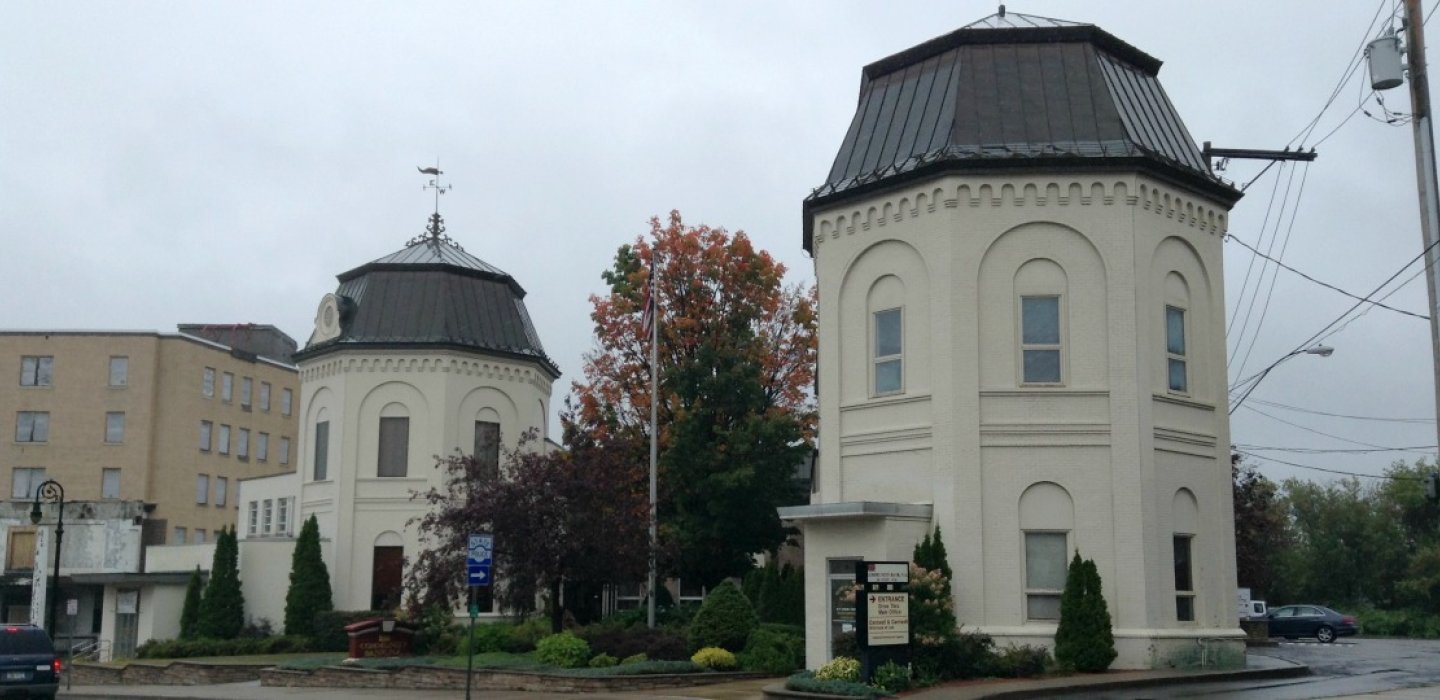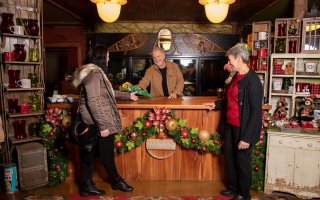
When we look for something different to do, we often look for things that are off the beaten path. But I have a suggestion for something that is a very well-beaten path! Malone's Downtown Walking Tour shows off Malone's history through an amazing collection of architecture.
Malone's position near the Canadian border meant it was first surveyed back in 1801 for Richard Harison, a New York City lawyer and politician who had bought part of "Macomb's Purchase." This was a territory of some 3,670,715 acres sold by the state of New York in 1791 to Alexander Macomb, a Loyalist land speculator. He was unable to turn over the land swiftly enough to keep up with his debts, and was taken to debtor's prison.
His son and namesake redeemed the family name with his great military deeds during the War of 1812 (when Malone was sacked by British troops), gaining the nickname "The Hero of Plattsburgh." He went on to become the Commanding General of the United States Army from 1828 until his death in 1841.

Most of the earliest buildings are gone now, but there are some from the 1840s, and even more from the great railroad boom through the late 19th century. One of these historic buildings is also where the tour starts.
The House of History, the home of the Franklin County Historical and Museum Society, was built in 1864 as a private residence and became a museum in 1973. Here there are many interesting documents and objects from the history of the area, such as 19th century maps of Franklin County, the business advertisements of different eras, domestic and farm tools, and family memorabilia, diaries, and scrapbooks. Items commemorating the economic interests of the area include the production of linen from flax, spinning and weaving of wool, and hop production, which was once an important crop. There are also many items from the life of Rutherford B. Hayes' Vice-President, William Wheeler, who was born, and rose to political prominence, in Malone.

Of all the imposing spires that tower over downtown, the most magnificent is probably the one belonging to the First Congregational Church (#2 on the tour.) While the congregation celebrated their 200th anniversary in 2007, this is actually the third church building on the site. The current Norman-Romanesque style building was built on the foundation of the previous structure.
First Congregational was the first organized religious group in all of Franklin County, formed under the pastor Rev. Ashbel Parmelee. He was not only one of Malone's leading citizens, he was also the area's leading abolitionist. There is considerable documentation which points to the church as a stop on the Underground Railroad. There is also a tunnel and a concealed room built in the basement which strongly suggests such activity. By their very nature, Underground Railroad stops and personnel were, and are still, shrouded in secrecy.

Malone's own William A. Wheeler was the US Vice President under the Hayes Administration. His residence (seen above) became the Elk Lodge in 1913, but it has not changed that much over the years. It is #4 on the tour, and might be one of the most difficult to discover. Hint: look for the fence.
Mr. Wheeler was an American success story, rising from poverty to become a lawyer and hold many important offices besides that of Vice President. His reputation for integrity and fairness was one of his most enduring legacies. As President of the New York State Constitutional Convention of 1867, his acceptance speech contained this strong endorsement of racial equality:
"[W]e owe it to the cause of universal civil liberty, we owe it to the struggling liberalism of the old world...that every man within [New York], of whatever race or color, or however poor, helpless, or lowly he may be, in virtue of his manhood, is entitled to the full employment of every right..."

The above charming Victorian is #6 on the tour, named Queen of the May because that was the month construction was completed... and it is obvious what a queenly residence it is. This design is by Archimedes Russell, a professor of architecture at Syracuse University who has much of his work listed on the National Register of Historic Places.
This house displays the era's extravagant details and strong coloring. After WWI such statements fell out of favor, and one after another, these stunning "painted ladies" were garbed in more modern colors. It is wonderful to see so many of them being returned to their origins. (Elm Street is a particulary good area to see many stunning homes which are not listed in the tour brochure.)

The Wead Library (another stop on the tour) was built in 1933. It is now part of the Malone Central School District. The original building and site were donated by Mary Kasson Wead in memory of her husband, a prominent businessman named Samuel Wead.
Such was the enthusiasm for literacy that the old building, at 12 Elm Street, became inadequate. Frederick Wead, a Wead family descendant who was also a Boston architect, designed the new building. That is Crippen stone, from the town of Burke, on its exterior. The books were carried from the old location to the new library by a large force of local volunteers. The original building, #12 on the tour, now houses the village offices.

St. Mark's Episcopal Church (#9 on the tour) was constructed in 1884, to replace the 1846 church building. Note the prominent rose window in the main building, and more Crippen stone on the exteriors. The parsonage, at left, is a delightful, scaled-down, copy of the church's architecture.
As we move closer to downtown, we find the ages of the buildings, or the sites, increase. Many of the most elaborate and striking buildings came from Malone's economic expansion of 1875 onwards, when the commercial possibilities of the railroads came into full bloom. Be sure to seek out #13 on the tour, now known as the Community Bank.

This fascinating pair was built in 1850 as the Rutland Railroad (originally named the Rutland & Burlington Railroad) ticket & freight offices. The train tracks once ran between the towers. This was the vital link between the farmer's products and the markets they served. This importance was reflected in the eye-catching and distinctive look of the train offices.
Malone was also where the New York Central's tracks crossed the Rutland Railroad's route, running from Ogdensburg to Rouses Point. The Rutland once served a 400-mile system that ran from Chatham, New York to Alburgh, Vermont, with a terminus as far north as Noyan, Quebec and as far west as Ogdensburg. The Depression struck the first crippling blow, and newer technologies gradually replaced the railroads.
With a total of sixteen buildings on the tour, it is a great way to explore the town, learn the history, and have a lot of fun.
There are many downtown buildings of interest not listed on the tour, such as the 1930 Franklin County Courthouse, site of the famous trial of Dutch Malone. Another nearby point of interest: the pioneer family of Laura Ingalls Wilder's "Farmer Boy" settled in nearby Burke. Their original home, built after their arrival in 1840, is one of the oldest buildings in the area, and is now preserved as part of the Almanzo Wilder Homestead.
Visit other Malone attractions. Find some delicious dining. Choose some cozy lodging, historical or otherwise.
This week in ADK news:
Snowshoeing the Schroon region






Comments
Add new comment